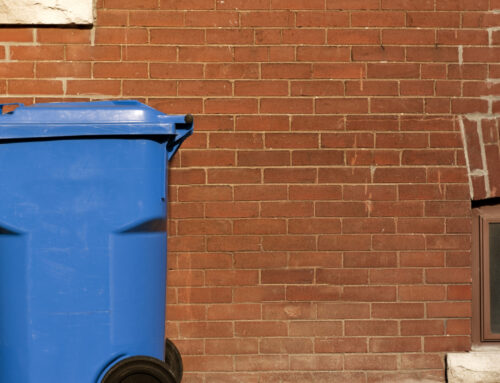
Sanitation services play a crucial role in ensuring public health, environmental protection, and overall quality of life. The systems we rely on today to manage waste and maintain hygiene are the result of centuries of evolution, innovation, and adaptation. What began as rudimentary efforts to remove waste from human settlements has transformed into advanced sanitation systems that integrate technology, recycling, and sustainability. This article traces the history of sanitation services, examining how they have evolved from basic waste removal to the sophisticated, sustainable systems in use today.
Early Waste Removal Practices
Human civilizations have always had to contend with waste. In ancient times, waste disposal was a relatively straightforward process, but it varied significantly based on the society and geographic region. In early agrarian societies, people would often dispose of waste by burying it or using it as fertilizer for crops. This system worked reasonably well in small, spread-out populations where the volume of waste was minimal.
However, as populations grew and human settlements became more urbanized, managing waste became increasingly challenging. Ancient cities like Rome and Athens had to develop more structured methods for waste removal. The Romans, for instance, are credited with pioneering many sanitation innovations, including the development of public latrines and sewer systems. The Cloaca Maxima, Rome’s primary sewer, was one of the earliest large-scale efforts to divert waste away from the city’s population to protect public health and maintain cleanliness. Waste removal was often done manually, with waste collectors transporting garbage away from homes and public areas, though there were no formal systems in place for its disposal.
In other parts of the world, similar early sanitation methods were developed. For example, in ancient Greece, sewers were built to remove wastewater from public baths and homes, and in China, human waste was often collected and reused as agricultural fertilizer. While these early systems laid the foundation for sanitation services, they were still rudimentary and focused primarily on removing waste from inhabited areas rather than managing its disposal in an environmentally friendly way.
The Industrial Revolution
The Industrial Revolution, which began in the late 18th century, brought about significant changes in the way humans lived and worked. As factories proliferated and urban populations exploded, the amount of waste generated increased dramatically. Cities were ill-prepared for this surge in waste, and without proper sanitation services in place, many urban areas became breeding grounds for disease.
Open sewers, uncollected garbage, and contaminated water supplies created public health crises, with diseases like cholera, typhoid, and dysentery running rampant. This period highlighted the importance of sanitation services and prompted governments and city planners to rethink how waste was managed. The sanitation crisis during the Industrial Revolution became a catalyst for the development of modern waste management systems.
In response to these challenges, many cities began implementing organized waste collection services. In the mid-19th century, public health reformers like Sir Edwin Chadwick in the United Kingdom advocated for the creation of sanitation services as a means of improving health and preventing disease. His work led to the Public Health Act of 1848, which required local governments to provide clean water and ensure proper waste disposal in British cities.
Around the same time, new technologies like water treatment facilities and underground sewer systems were developed to manage both human waste and industrial pollutants. This marked the beginning of modern sanitation infrastructure, with an emphasis on public health and the safe removal of waste from cities.
The 20th Century
As cities grew throughout the 20th century, waste management services became more sophisticated. Municipal governments took on the responsibility of collecting, transporting, and disposing of waste in landfills or incineration plants. Garbage trucks became a common sight in urban areas, collecting household waste on scheduled days and transporting it to centralized disposal facilities. However, these early systems often focused on simply getting waste out of sight, with little consideration for the long-term environmental impact of waste disposal.
The environmental movement of the 1960s and 1970s brought attention to the negative effects of landfills and incinerators, which contributed to air, soil, and water pollution. In response, governments began regulating waste disposal more strictly, and new technologies were developed to reduce the environmental harm caused by waste. One of the most significant advancements during this period was the introduction of sanitary landfills, which involves compacting waste and covering it with layers of soil to prevent it from polluting the surrounding environment.
At the same time, recycling became a central component of waste management. The idea of reusing materials instead of simply discarding them gained traction, leading to the establishment of municipal recycling programs in many countries. By the late 20th century, recycling bins had become a familiar feature of residential waste management systems, and the public was encouraged to separate recyclables from regular trash.
The Rise of Advanced Sanitation Systems in the 21st Century
The 21st century has seen a revolution in sanitation services, driven by advancements in technology, increased environmental awareness, and a growing emphasis on sustainability. Today, sanitation services are not just about collecting and disposing of waste; they are about managing resources, reducing pollution, and minimizing the carbon footprint of waste management systems.
Smart Waste Management
One of the key advancements in modern sanitation services is the integration of technology. Smart waste management systems use sensors, data analytics, and GPS technology to optimize waste collection routes, reduce fuel consumption, and minimize the number of waste collection trips. Sensors can be placed in trash bins to monitor their fill levels, allowing for more efficient scheduling of pickups. This technology not only reduces the cost of waste collection but also lowers the environmental impact of sanitation services.
Waste-to-Energy Facilities
Another major advancement is the rise of waste-to-energy (WTE) facilities. These plants convert non-recyclable waste into electricity, heat, or fuel, providing an alternative to traditional landfills and incinerators. WTE facilities significantly reduce the volume of waste sent to landfills while generating clean energy that can be used to power homes and businesses. This approach helps to address both waste disposal and the growing demand for renewable energy.
Circular Economy and Zero Waste Initiatives
Modern sanitation services are increasingly aligned with the principles of the circular economy, which emphasizes the importance of designing products and systems that eliminate waste. Zero waste initiatives, which aim to divert as much waste as possible from landfills and incinerators, are gaining popularity in cities around the world. These initiatives encourage residents and businesses to reduce, reuse, and recycle materials, with the goal of creating a closed-loop system where resources are continually reused rather than discarded.
Sustainable Landfill Practices
While landfills remain a part of waste management systems, they have evolved significantly from their earlier forms. Modern sanitary landfills are designed to minimize environmental impact through measures like methane capture, leachate collection, and careful site monitoring. Methane, a potent greenhouse gas produced by decomposing waste, can now be captured from landfills and used as a source of renewable energy, further reducing the environmental footprint of waste disposal.
Challenges and Future Innovations
Despite the significant advancements in sanitation services, challenges remain. Managing the increasing amount of electronic waste (e-waste), for instance, poses unique challenges due to the toxic materials found in electronics. Furthermore, ensuring that all communities, especially in developing nations, have access to modern sanitation infrastructure remains a global priority.
Looking ahead, further innovations in waste management are expected, including the development of biodegradable materials, improved recycling technologies, and even the potential for space-based waste disposal solutions. Additionally, public awareness and education about waste reduction and responsible consumption will continue to play a critical role in shaping the future of sanitation services.
A Journey Toward Sustainability
The evolution of sanitation services from basic waste removal to advanced systems is a testament to human ingenuity and the ongoing pursuit of a cleaner, healthier planet. As we continue to face environmental challenges such as climate change, resource depletion, and pollution, the role of sanitation services will only become more important. By embracing technology, promoting sustainability, and encouraging responsible waste management, we can ensure that future generations inherit a cleaner and more sustainable world. Call AAA Sanitation & Garbage Removal to join us on this mission.
AAA Sanitation & Garbage Removal
79 Business Dr Ste A
Hull, GA 30646
(706) 543-7788
https://aaasanitationco.com/






Leave A Comment